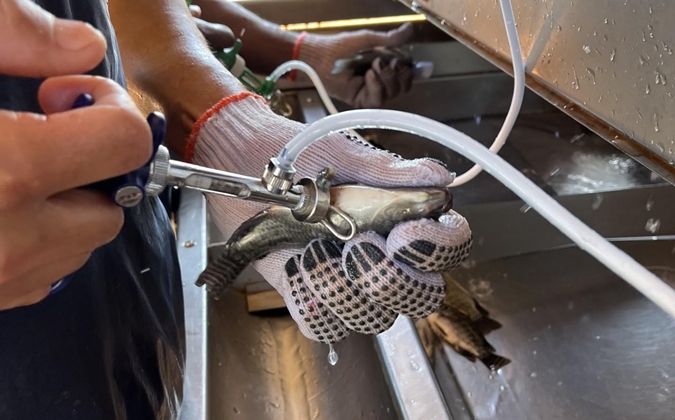
Taming tilapia lake virus requires improved expert collaboration
Tilapia lake virus (TiLV) is an emerging threat to aquaculture, having been discovered in 2014 and now reported in 16 countries.
Limiting the worldwide impact of infection depends on greater collaboration among the scientific community, according to a new review of knowledge on the pathogen to date. The effect of inaction could be severe, explained the researchers from Kasetsart University and University of Bern.
“The economic impact of worldwide trade in tilapia is estimated at $7.5 billion annually, and the infectious agents implicated in mass tilapia die‐offs on four continents pose a threat to the global tilapia industry, which not only provides inexpensive dietary protein, and thus is a crucial contribution to food security, but also is a major employer in the developing world,” they said.
High mortality rates have been recorded from TiLV infection, the researchers said, with multiple organ failure and secondary bacterial infections thought to be important factors. More knowledge on co-infection and the precise immune response of infected fish is needed, they explained.
Progress needed on detection and treatment
The authors highlighted a number of further areas for more urgent progress.
“A universal and validated diagnostic assay is required to detect infected fish and assist the control programme which will gradually reduce the burden of disease,” they said. “Furthermore, the establishment of a specific pathogen‐free (SPF) stocking broodstock or vaccine will act as an important preventive measure for TiLV disease.”
There is currently no vaccine or antiviral therapy available for TiLV, with biosecurity and good management practices used as preventive measures. Vaccination against the virus could be possible, they said, based on observations from their own work, showing that fish that survive infection develop protective immunity against further exposure.
Live and inactivated vaccines are currently being developed and tested in several countries, while a good vaccine should be easy to administer for small fish, they continued.
Focus on pathogens affecting food production urged
No single risk factor has been established to explain virulence of the disease, which has been observed at low levels without clinical signs, they said. They cited climate, husbandry techniques and prior condition of host fish to be factors noted in studies to date.
“If a fraction of the international collaborative effort seen for other diseases such as COVID‐19 was initiated here, then more TiLV isolates from around the globe would be known, innovative basic research such as using genomic data to drive reverse genetic experiments would be realized, and there would be better diagnostics, control measures and biosecurity at fish farms,” they concluded.
“The issue of TiLV is global, and so these answers must come from international scientific collaborations, avoiding political agendas, enabling the best scientific ideas, sharing of resources and quicker results.”
To view the full study published in Journal of Fish Diseases, click here.
Posted on: November 02, 2020






